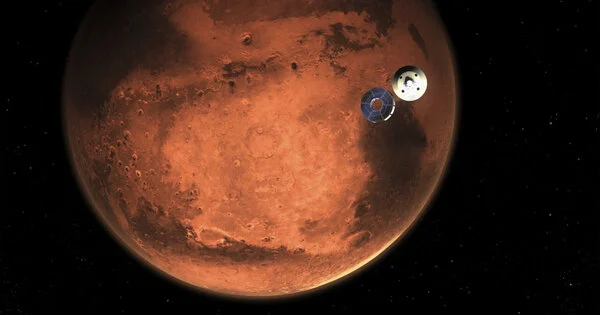Determining the existence of ancient life on Mars is a challenging task, and it requires the use of specialized tools and techniques. Some of the tools currently being used by scientists to study Mars include rovers, landers, and orbiters.
According to a research team co-led by a Cornell University astronomer, current cutting-edge instrumentation being sent to Mars to collect and analyze evidence of life may not be sensitive enough to make accurate assessments.
In a paper published in Nature Communications, visiting planetary scientist Alberto Fairén and an international team of researchers claim that detecting ancient organic material in Martian rocks with current instruments and techniques may be difficult, if not impossible.
Fairén – also a research professor at the Center of Astrobiology (CAB) in Madrid and colleagues conducted tests on sedimentary rocks found in the Red Stone Jurassic fossil delta of the Atacama Desert in northwestern Chile, the oldest and driest desert on Earth and a popular geological analog to Mars.
This European rover will carry a drill with the unprecedented capability of reaching down to a depth of 2 meters (6 ½ feet) to analyze sediments better protected against the harsh Martian surface conditions.
Armando Azua-Bustos
The researchers used four instruments that are currently or will soon be on Mars to conduct geological tests at Red Stone. They discovered numerous microorganisms of unknown classification in the samples, as well as a mix of biosignatures from modern and ancient microorganisms that can only be detected with cutting-edge laboratory equipment.
This revealed to the researchers that, depending on the instrument used and the organic compound sought, the instrumentation sent to Mars might not be sensitive enough. “Specifically, the possibility of obtaining false negatives in the search for life on Mars emphasizes the need for more powerful tools,” said lead author Armando Azua-Bustos, a CAB research scientist on Fairén’s team.

Either putting complex instrumentation on Mars, approximately 53 million miles away, or bringing Martian samples to Earth is necessary in order “to conclusively address whether life ever existed on Mars,” the researchers wrote. In this case, both options are extremely difficult, Fairén said.
“You need to decide whether is more advantageous having limited capability for analysis on the surface of Mars to interrogate a wide variety of samples,” he said, “or having limited samples to be analyzed with the wide variety of state-of-the-art instrumentation on Earth.”
NASA is currently collaborating with the European Space Agency and others to safely transport geological samples collected by the Perseverance rover to Earth. Fairén also stated that the first European Mars rover, Rosalind Franklin, is expected to launch as early as 2028.
“This European rover will carry a drill with the unprecedented capability of reaching down to a depth of 2 meters (6 ½ feet) to analyze sediments better protected against the harsh Martian surface conditions,” he explained. “If biosignatures are better preserved at depth, as we expect, there will be more abundance and diversity, as well as better biosignature preservation, in those deep samples. As a result, our instruments on the rover will have a better chance of detecting them.”





